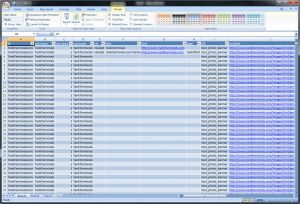 How to make KML and KMZ files for Google Earth maps
How to make KML and KMZ files for Google Earth maps
Google Earth is among the most popular programs created by the Google company. With the help provided by its satellite imagery, the program enables you to view towns and buildings. You can also use this utility to easily find locations from around the world (tennis courts, restaurants, office buildings, etc.) and save them as Google Earth placemarks for later. Saved placemarks can be exported to the KMZ format and set to display their correspondent names and geographical locations. Another type of files that can be handled in this application is the KML file format (KML meaning: Keyhole Markup Language) which was created specifically for displaying geographic data in the Google Earth app as well as other Internet-based Earth browsers.
In this guide, I will show you how to create, save, and open KML files. You will also learn how to transfer your Google Earth data from your PC to another computer.
Tutorial assets
You will need to download the following software to follow along with this tutorial.
Create and open a KML file
The most popular way to use KML files on Windows PCs is with the Google Earth program. Opening this type of file in the aforementioned app is very simple: just launch Google Earth on your PC, go to File -> Open, and select the KML file you wish to open (Optional: you can open multiple KML files at the same time if needed). However, things aren't as easy when it comes to creating KML files on your computer. You might need to install third-party KML creators or use online services to complete this goal. You can use these apps or services to create KML files from CSV or XLS documents.
Here, I will show you how to create KML files from Excel documents by using an Excel to KML tool called ExpertGPS.
Step 1
Download and install the app on your PC. Launch the utility.
Step 2
Paste the data from the Microsoft Excel file (the file should be opened in the Microsoft Excel app) in the ExpertGPS' Waypoint List. Make sure you enter the correct data (name, description, latitude, and longitude) in the proper columns and rows.
ExpertGPS Waypoint List
Step 3
Hit the F7 key on your keyboard to start the conversion process.
Optional: You can also import CSV files that contain geographic data and were exported with the Microsoft Excel app. ExpertGPS can convert the CSV files to the KML format within moments.
Save a KML file in Google Earth
Once you finish creating a placemark in the Google Earth app, you might want to share it with other people. One way to do that is by exporting the placemark as a KML file. Here's what you need to do:
Step 1
From the Google Earth app, select the placemark you wish to export. Your placemarks are listed on the left side of the main window.
Google Earth Placemark List
Step 2
Go to File -> Save -> Save Place As. Select a destination folder for the exported file. Enter a name for the new file. Click the "Save" button.
Step 3
You will export a KMZ file from Google Earth which will store the KML file you need.
Transfer Google Earth data to another computer
It's always a great thing to keep a backup of your favorite Google Earth placemarks. However, you first need to locate a myplaces.kml file (a document that contains all of your Google Earth data) before transferring or sharing it with the world. This file is automatically saved by the Google Earth app on your computer. But where does Google Earth save my places on Windows 10? And how can I sync my places in Google Earth? Here's what you need to do in order to transfer your Google Earth data to another computer:
Step 1
Hit the Windows Key + R and input in the Open box the following: "C:\Documents and Settings\%username%\Application Data\Google\GoogleEarth". Click the "OK" button.
Step 2
In the folder, you will need to find the "myplaces.kml" file.
Step 3
You can then copy the file to a USB drive for transferring the data to another computer or sync the myplaces.kml file across your Google Drive account.
Conclusion
As you can see, it's very easy to complete any of the aforementioned steps, even if you're new to the Google Earth application or you've never worked with KML or KMZ files on your Windows PC.
Alternative downloads
-
 ArcGIS Data
Interoperability for
Desktop
$2500
windows
Program that allows you to bring spatial data from many sources into the ArcGIS environment for mapping...
Download
ArcGIS Data
Interoperability for
Desktop
$2500
windows
Program that allows you to bring spatial data from many sources into the ArcGIS environment for mapping...
Download
-
 ExpertGPS
$33
windows
GPS map software, which helps you plan outdoor adventures.
Download
ExpertGPS
$33
windows
GPS map software, which helps you plan outdoor adventures.
Download






Comments
Subscribe to comments